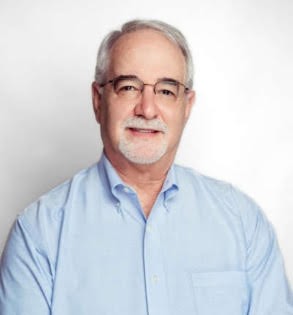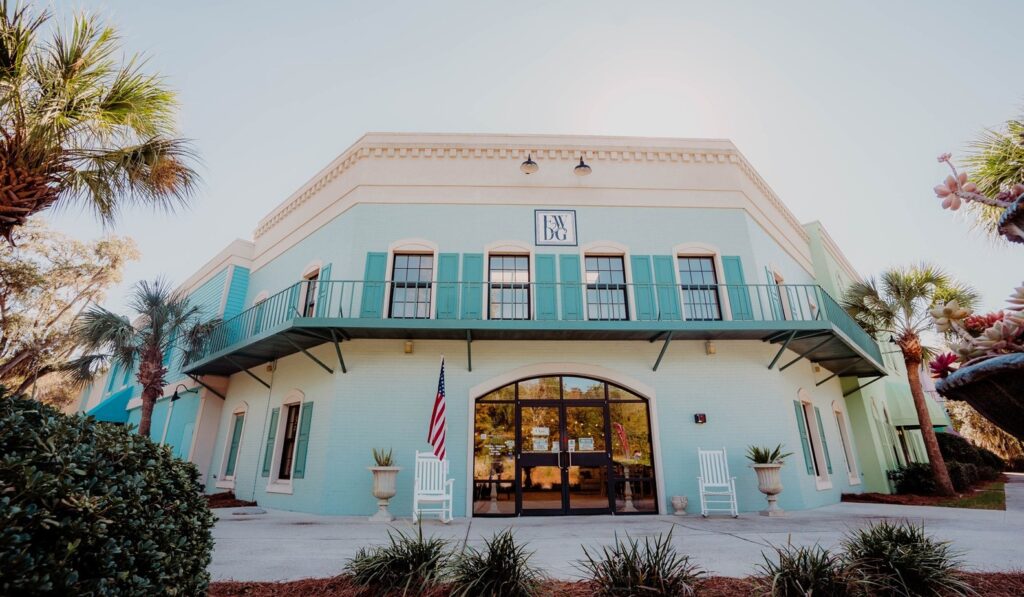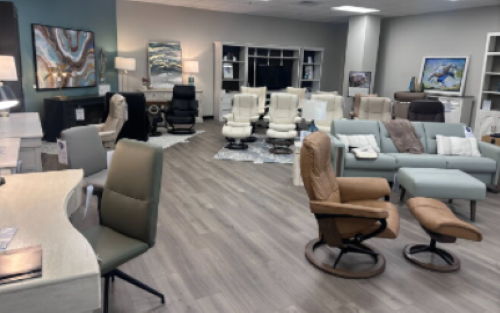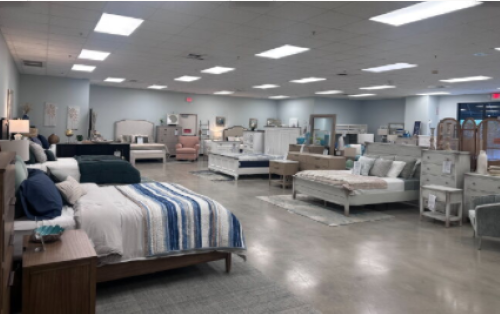Newsweek recently reported: “Thousands of retailers have announced closures across the U.S. in 2024, with a 69% surge on the number of shuttered stores in 2023.”
And yet, in towns all across America, small independent retailers not only survive, but thrive.
Home News Now’s Ray Allegrezza recently interviewed one of those retailers, Larry Mark, who launched a retail store called FWDG, The Furniture & Services You Deserve, in Beaufort, South Carolina, more than 50 years ago.
In the interview, Mark shared the store’s inception, history and recipe for success.
What follows is a summary of that interview.
HNN: Let’s start at the beginning. How did the store come to be?
Mark: Growing up, my parents had a furniture store. I went to college to become a teacher. After returning to Beaufort, I got to fill in for a couple of math classes and a study hall and that convinced me that that was not going to be a good fit. So, I started working in the family furniture store, and I liked it and was good at it.

They had moved up to lines like Thomasville, Drexel, Baker, Henredon and other primary brands and were doing very well with those brands. In January of 1972, my father decided to also open up a low-to-mid-end furniture and appliance store called Furniture Warehouse and asked them to let me run that location.
The store really took off and in March of 1975, my parents shut down their furniture store and came to work with me.
We did away with the appliances and used furniture and stuck with only new furniture because it was readily available, and it turned very quickly.
Some 26 years later, we built another building and moved into it and that’s when Furniture Warehouse became Furniture Warehouse and Design Gallery, which we shortened to FWDG.
How big was the new building?
Mark: Initially, it was a 6,000-square-foot building, and we made it 10,000 square feet. We moved our bedroom suites upstairs along with some dining and kept the upholstery and bedding downstairs.
In 1989, my brother and a former brother-in-law came to work with me, and I made them partners and began thinking about growing our business. We are in a market adjacent to Hilton Head and assumed that sooner than later, there would be more furniture stores coming into the market, so I decided to build the largest furniture store we could afford.

HNN: When was that and what transpired?
Mark: In 1998, we moved into a new building that was a total of 60,000 square feet. We went from 6,000 to 10,000 to 60,000 square feet, and initially I thought we will never fill a building that big with furniture, but eventually we did!
How did you do that first year?
Mark: In our first year at the new store, we did a little over $2 million and from there we continued to enjoy steady, modest growth.
HNN: What were your sales last year?
Mark: As of this past September, we grew to a little over $8 million in sales.
HNN: That’s great. Who is running day to day?
Mark: We hired a CEO who is a CPA and had been an executive with Panasonic. She had retired from Panasonic, and retirement did not suit her. We’ve also hired some good people around her. I retired May of last year and started a new business doing marketing for a number of local businesses here.
HNN: Talk to me a bit about the store’s name. I am intrigued by the name.
Mark: We changed from Furniture Warehouse to Furniture Warehouse Design Gallery when we moved to the new building and started carrying higher-end brands. Of course, Furniture Warehouse Design Gallery is too long when answering the phone, so we shortened it to FWDG. Lots of people are not sure what it stands for, so it gets their curiosity and attention. It’s also good for signage and our logo.
So, with lots of competitors, why do customers shop you?
Mark: Well, I think we’ve got a few things going there. For openers, it’s an open showroom, so when you walk in from the outside, it looks like quite a few small shops. In fact, every customer that walks in is wowed by the large open building and the sheer diversity of products.
Then, we have great design consultants who really get to the heart of what the customer is looking for. We also utilize lots of financing options which give even our high-end clientele a little comfort knowing we offer same-as-cash financing. Then there are the products we carry. We have trusted brands and offer more diversity of product and exceptional sales and service.

HNN: What are your key categories and primary brands?
Mark: Wow, we offer furniture for the living room, dining room, outdoors, mattresses, upholstery, home décor, you name it, we have it. Our brands include Aspen Home, Summer Classics, Rowe, Lane Venture, Tempur-Pedic, Stearns & Foster, Universal, Stressless, Palliser, Jofran, Vaughn-Bassett and more.
Who makes up the bulk of your customer base?
Mark: We are fortunate in that we have a broad customer base, but our primary customer is older females. However, we are also in a military town and have made a concerted effort to offer products suited to that customer, especially on our website. Featuring those items on our website allows us to cater to customers in the military without giving up lots of showroom space in the store.
So, as a single-store retailer, what do you see as your biggest challenges?
Mark: I look at the website as a great opportunity for capturing another class of customer, in this case, military personnel.
What about your biggest challenge?
Mark: Of late, it tends to be our warehouse personnel. Working in any warehouse is demanding, and it can be hard to find workers at the warehouse who really have their head and heart in the game.
So, as far as warehouse employees, it sometimes is a revolving door and yet, we have great people in that department that have been with us for more than 30 years.

Beaufort looks like a great community. How involved is the store in community events?
Mark: We do a lot of things and I’m very proud of the things we’ve done. In fact, we’ve won numerous awards, including the Martin Luther King Award for business from a local organization. We do a coat drive that we’ve been doing for over 30 years where we collect coats and, working with various nonprofits, distribute them free of charge to those in need. We do that every year, and in November and December, we typically give out between $60,000 and $75,000 in checks towards the end of our fiscal year to nonprofits who get the most votes. Last year, I believe we did $80,000. We also give a gift of $500 in school supplies to local schools, and this past August we did that for 13 schools.
That’s wonderful. Let me switch gears here for a moment and ask you how important are the reps to your business and what do your best reps do for you other than show you product?
Mark: You know, we had some reps that we had to basically outlaw from coming in the store because they were not helpful when we had a service issue. They would just tell us to go to the factory and if we didn’t get satisfaction there, that was just too bad. The ones that do help us realize the value in keeping us and our customers happy. They come into the store frequently, they train our design consultants every so often on a Saturday morning at the store. They are aggressive in making appointments for when we’re going to the furniture markets, and they don’t just don’t just give us the line from their sales manager. They give us what they really think will work for us!
Good. Now the same question as it applies to your suppliers?
Mark: You know, getting you product when they say they will. Co-op allowances are always nice, and it doesn’t have to be ongoing — it can be by request. Shipping our goods in a reasonable time frame is also key. We’ve got one right now that was a very good supplier that now are telling us their leather goods are going to be out 10 to 12 weeks or longer and it’s not an upper-end category say like Stressless where my customers will wait that long. So, I’m telling our buyers that this company needs to go by the wayside because you’re aggravating customers who fall in love with their goods and then we must tell them it will be months before they can get it. People are accustomed to Amazon, and if their order is not there in two days they want to know why.

Most customers can understand waiting for a reasonable amount of time but when you tell them 20 weeks or more, you lose that customer.
Last question for you, Larry. Under the new Trump administration, how do you see our industry faring?
Mark: I’m certainly curious about tariffs, although if everybody is in the same boat, I don’t know how it’s going to hurt us more than anybody else, right?
With the growing utilization of online shopping, I see more young people going to buy online so independent stores are going to have to have good websites.
As an independent, you must be where your customer is headed. And in today’s market, that is getting increasingly more difficult to pinpoint.
To be honest, years ago I worried that the independent retailer might be gone, especially as you watched what happened to folks like Badcock, Conns, Heilig-Meyers and others.
I really don’t want to speculate because as I said, a decade or so ago, I was worried that all the independents would be out of business.
Today I’m just happy that we continue to make inroads, have great people working here, have great customers and seem to be on the right track.

 by
by 


